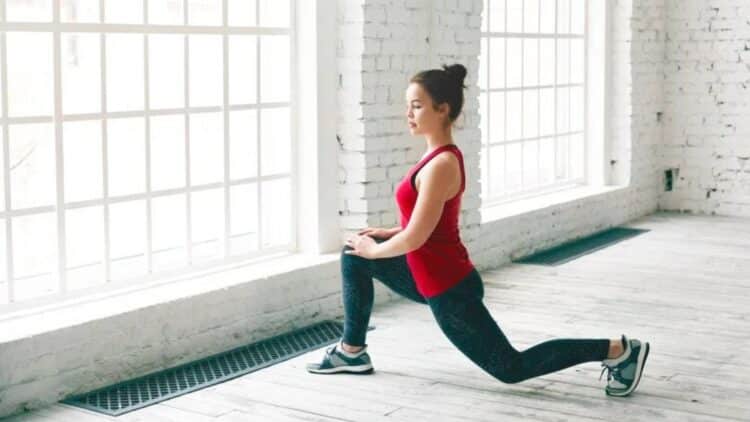If you are someone who works many hours sitting, feels stiffness in the hips, and has limited flexibility, experts have an explanation. The culprit behind these sensations is a small muscle called the psoas, located in the abdomen and connecting the spine to the leg. When the muscle is tight or weak, it causes lower back pain, hip stiffness, back pain, and contributes to poor body alignment. According to physiotherapist Melissa Prestipino, it is essential to stretch the psoas daily to relieve the tension stored there, as it is one of the main hip flexors and affects walking and climbing stairs.
That is why dedicating a few minutes to stretch it, especially if you spend many hours sitting or engage in high-impact workouts, is essential for our body’s health, mobility, and overall physical well-being. Some of the recommended exercises are hip flexor stretches while kneeling, SAS stretches while lying supine, bridge pose, and lunge stretches. Through this movement therapy, leading a less sedentary life, and taking care of physical well-being, we can say goodbye to back pain, lower back pain, and hip joint stiffness.
Psoas
The psoas is a deep muscle located in the abdomen that connects the spine to the leg. It originates in the lumbar vertebrae and the last thoracic vertebra and joins the iliacus muscle to form the iliopsoas, which inserts into the lesser trochanter of the femur. It is the muscle responsible for helping lift the legs, stabilize the torso, and maintain an upright posture. By connecting the upper and lower parts of the body, its work is constant, as it is activated when sitting, climbing stairs, or walking. Maintaining good posture and healthy movement mechanics requires a strong and flexible psoas.
Problems in the psoas
A weak psoas can trigger back pain, lower back pain, limited flexibility, and stiffness in the hip joints. When you sit, the muscle tightens and shortens, causing stiffness and tension when standing up. In addition to a sedentary lifestyle, excessive use of the muscle in activities such as running, cycling, or high-impact workouts can also cause pain and inflammation.
Medical conditions such as rheumatoid arthritis or osteoarthritis can aggravate pain originating from the psoas. For this reason, physical therapist Melissa Prestipino, D.P.T., recommends practicing daily psoas stretching exercises to relieve tension, improve mobility, and achieve better postural hygiene.
Stretching
Some of the exercises you can practice to work on and release tension in the psoas are:
- Kneeling hip flexor stretch. This exercise involves kneeling on the floor with one leg while the other foot is in front. Keeping your back straight, gently lean forward until you feel a stretch in the front of the hip of your back leg. Hold the position for 30 seconds and then switch sides.
- Supine psoas stretch. In this case, you will need to lie on your back, bringing one knee to your chest and holding it with your hands. While doing so, extend the other leg along the floor to stretch the front of the hip. Hold for 30 seconds to one minute, then switch legs.
- Bridge pose. Again, lying on your back with your knees bent, keep your feet flat on the ground. Lift your hips toward the ceiling while tightening your glutes. Hold for several breaths and slowly lower.
- Lunge stretch. Place one foot forward as if taking a step and keep the other leg extended behind. Tilt your pelvis slightly forward and bend the front knee to feel the stretch in the hip and thigh of the back leg. Repeat on the other side.
These movements activate and stretch the SMA, providing flexibility and strength. Remember that these exercises are only recommendations. If you feel any discomfort or pain, you should always consult your doctor or a professional before trying any of these recommendations.
